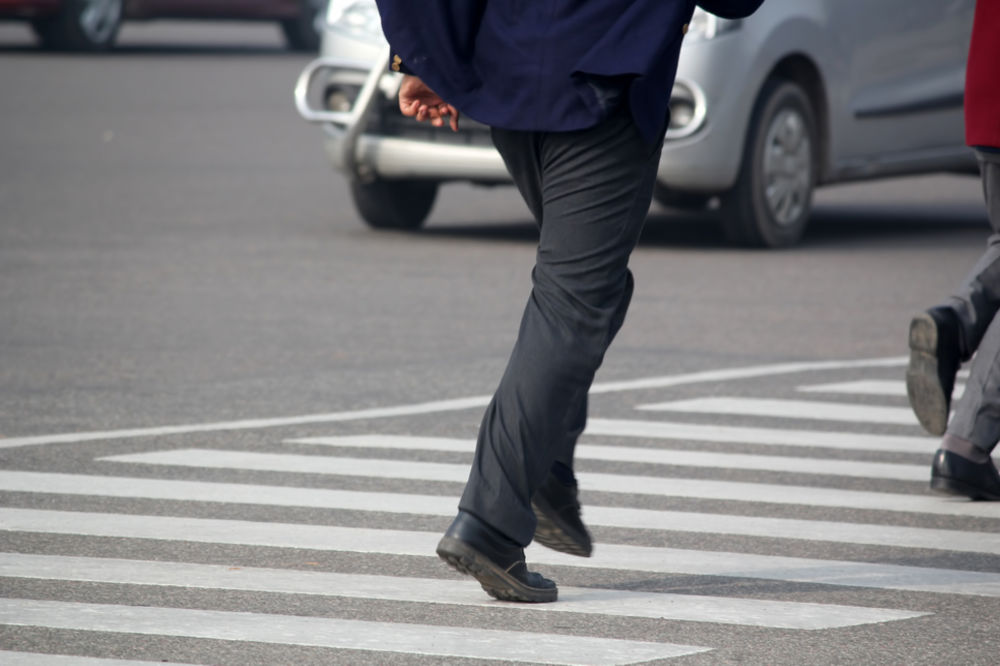In any collision between a motor vehicle and a pedestrian, the pedestrian will suffer the most injuries. The pedestrian is entirely unprotected and lacks the buffers of steel and plastic that cars have, not to mention the protection of airbags and seatbelts. Because of this, the state of Indiana has clear-cut laws in place for drivers and pedestrians to determine who has the right of way.
If a fair settlement isn’t possible and your case goes to court, the jury will consider all of the facts of the case before determining who was negligent and is liable. In some cases, both the driver and pedestrian may be liable, and the jury will determine the percentage of fault to assign to each party.
- Nationally, between 2009 to 2018, the number of pedestrian fatalities increased by 53%, from 4,109 in 2009 to 6,283 deaths in 2018.
- In Indiana, the number of collisions involving pedestrians declined 5% from 1,653 in 2018 to 1,573 in 2019.
- This works out to 7.2 pedestrian collisions for every 1,000 collisions in Indiana.
- Not all Indiana counties have similar statistics; heavily populated areas had more pedestrian fatalities than other areas of the state. For example, the House district comprising the lower part of Marion County (Indianapolis) had the 68th most fatalities out of all 435 House districts in the nation between 2008-2017.
- 74% of pedestrian accidents in 2018 occurred not at an intersection, and 17% took place at intersections.
You may assume that simply because the pedestrian is at such a disadvantage, a jury will always find the driver negligent, but this isn’t necessarily the case. Indiana Code IC 9-21-17 has several clear-cut laws that pedestrians must follow, such as:
- When there is Walk/Don’t walk signs, pedestrians must abide by them. They are not allowed to walk when it says “Don’t Walk.” However, they are allowed to continue crossing the road if the “Don’t Walk” sign starts flashing while they are mid-cross.
- A pedestrian may not suddenly leave a curb or other place of safety and walk or run into the path of a vehicle that is so close as to constitute an immediate hazard.
- Between adjacent intersections at which traffic control signals are in operation, pedestrians may not cross at any place except in a marked crosswalk.
- Pedestrians shall move, whenever practicable, upon the right half of crosswalks.
- If a sidewalk is provided and the sidewalk’s use is practicable, a pedestrian may not walk along and upon an adjacent roadway.
- If neither a sidewalk nor a shoulder is available, a pedestrian walking along and upon a highway shall walk as near as practicable to an outside edge of the roadway. If the roadway is two-way, the pedestrian shall walk only on the left side of the roadway.
- Except as otherwise provided in this chapter, a pedestrian upon a roadway shall yield the right-of-way to all vehicles upon the roadway.
However, this doesn’t mean that a driver has the right to just run over a person walking in the road simply because they are jaywalking or not following the law. The driver has the responsibility to avoid hitting pedestrians when at all possible.
In other words, both the driver and the pedestrian must use common sense and strive for safety.
If you are a pedestrian who was struck by a driver, an expert pedestrian attorney will be able to investigate and fight your case for you. Your attorney will need to establish three things for the jury to find the driver negligent:
- The driver owed the pedestrian a duty to exercise reasonable care (all drivers must obey all traffic laws and exercise reasonable care to avoid harming others while navigating the roads),
- The driver breached the duty to exercise reasonable care, and
- The driver’s negligence caused the pedestrian’s injury.
As catastrophic as a pedestrian accident is, compensation is not automatic. Since Indiana uses a modified comparative negligence system, you may only be compensated for your losses if you were no more than 51% at fault for the accident. In other words, if you crossed the road outside of a crosswalk and a driver struck you while speeding, your right to 100% compensation is in jeopardy.
Other forms of negligence that show the driver to be at fault include:
- Driving under the influence of alcohol or drugs
- Overtaking a vehicle stopped at a crosswalk
- Ignoring traffic signals
- Failure to yield the right of way
- Distracted driving (texting is the biggest problem here)
- Reckless driving
- Fatigued driving
When you are involved in a pedestrian accident, negligence and liability will be determined by the jury. A jury will look at factors such as if you were in a designated walkway as a pedestrian, or if the driver of the motor vehicle or bicycle that hit you was watching where they were going. Were they paying attention? Were they using their cell phone? All of these factors will be presented to a jury if your case goes to trial, and a jury will determine who’s at fault, who was negligent, and how much fault should be assigned to each particular party.
If you were hit as a pedestrian in Indiana and can prove that the driver was negligent, you can file a claim to recover compensation for your losses. Our Indianapolis pedestrian accidents lawyer at Crossen Law Firm can help you build a strong case against the driver and gather all the evidence and documentation you need to support your claim.
To learn more about pedestrian accidents, contact our knowledgeable legal team at (317) 401-8626.

 317-401-8626
317-401-8626 
.jpg)